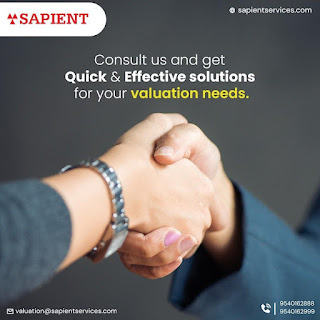What standards are used to value plant and machinery? | Sapient Services
Calculating the value of these assets is a critical step in
the valuation of plant and machinery. Depending on the situation and goal of
the valuation, the criteria for valuation may change. To arrive at a fair and
accurate valuation, a number of elements are taken into account, whether it is
for financial reporting, insurance purposes, taxation, or transactions like
mergers and acquisitions.
Computers, office furniture, equipment, machinery, and other
goods that you employ to run your business are among the assets that are
typically categorized as "plant and machinery." The expenditures
associated with tearing down machines and other equipment may also be included.
criteria for valuing plants and machinery
Age and condition
The age and physical condition of plants and machinery are
important considerations for determining their value. The assets' age offers
information about their potential for continuous operation and remaining useful
life. Compared to older equipment, well-maintained gear that is relatively new
typically has a higher value. Similar to this, it is important to consider the
assets' state, including normal wear and tear, maintenance history, and any
current damage or repairs, when determining its value.
Market Price
In the valuation process, market value is important. This requires taking into account the current market values of comparable plants and equipment. The market value is influenced by market movements, supply-demand dynamics, and economic considerations. Frequently, appraisers examine recent sales data and auction.
Depreciation
Depreciation explains how the value of equipment depreciates over time as a result of things like normal wear and tear, obsolescence, and technical developments. The accumulated depreciation can be calculated in a variety of ways, including straight-line or reducing balance depreciation. The assets' net book value, which in some situations serves as the foundation for valuation, is calculated by deducting the depreciation amount from the assets' original cost or beginning value.
Cost of Replacement
The replacement cost approach takes into account the price of
purchasing new equipment with same or similar features and capabilities. It is
predicated on the idea that an informed buyer would not overpay for an asset if
a comparable one could be acquired for less money. using the replacement cost
method.
Technical Requirements
Technical details have a major role in the assessment of
equipment and machinery. Evaluation of elements including capacity, efficiency,
performance, and technological aspects are part of this process. Due to their
competitive advantages and potential for better returns, assets that offer
greater production capacity, improved energy efficiency, superior performance,
and sophisticated technological capabilities are frequently valued higher.
Utility Function
The ability of plants and machinery to carry out their
intended purpose effectively and efficiently is referred to as functional
utility. This criterion evaluates elements like manufacturing capacity,
dependability, flexibility to meet shifting industry standards, and compliance
with current procedures. Assets with the potential to boost output, cut
downtime, and boost operational effectiveness frequently have a higher value.
Regulatory and Legal Compliance
An important factor in the valuation of plant and machinery is compliance with applicable laws, regulations, and safety requirements. In order to reduce potential risks and guarantee operational integrity, assets must meet or exceed legal and regulatory criteria. Due to the expenditures associated with bringing non-compliant assets up to code or the resulting operational and legal issues, they may be less valuable.
It's vital to remember that different industries and
geographical areas may have different valuation standards. Depending on their
individual qualities, different industries may use different approaches or
specialized elements. For instance, assets in the manufacturing sector can be
assessed based on production capacity and quality assurance procedures, but
assets in the healthcare sector might
The assessment is often carried out by qualified appraisers
or valuation experts with knowledge of a particular industry and valuation
objective. To arrive at a precise and thorough evaluation of the worth of plant
and machinery, they combine a variety of valuation methodologies and these
criteria.
Concerning Sapient Services
Sapient Services took over the management of M/s Malhotra
Associates in April 1988. The company initially concentrated on risk analysis,
damage analysis, plant and machinery appraisal, Chartered Engineer
certification, and third-party inspection. A government-registered valuer with
offices in Mumbai, Sapient Services Pvt. Ltd. employs chartered engineers,
insurance surveyors and loss adjusters, risk inspectors, and assessors. It
offers excellent Chartered Engineering Services compared to other companies.
More than 15000 cases concerning marine freight have been handled by the
company.



Comments
Post a Comment